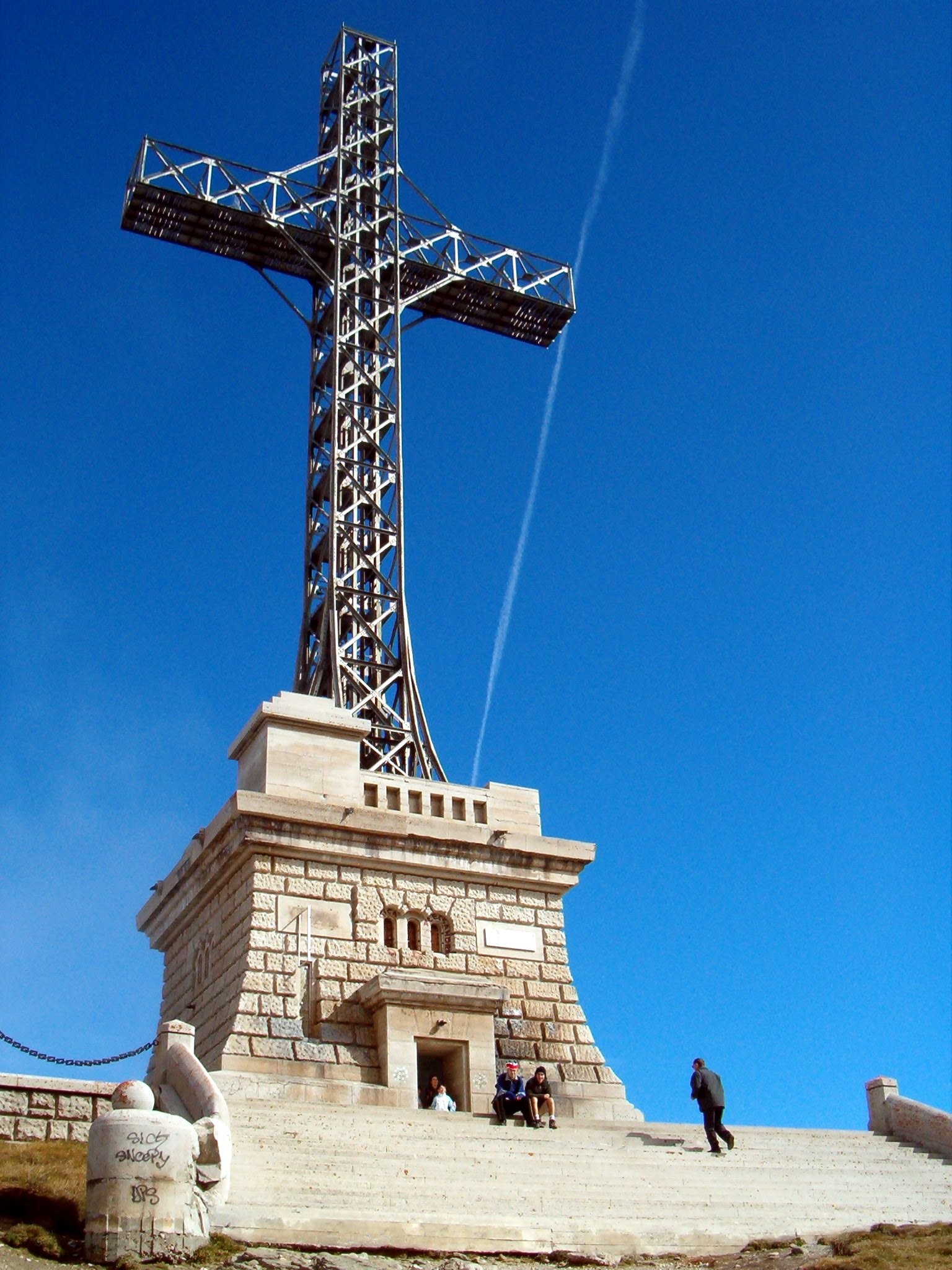The Heroes Cross is located in the saddle of the Caraiman Mountains, on the slope to the Seacă Valley at an elevation of 2,291 meters; it is unique in Europe, both by the location's altitude and by the monument's size. The cross itself has a height of 28 meters and two arms of 7 meters each. The monument was the tallest structure in the world situated at such an altitude. The width of the vertical pole is 2 metres, the horizontal arms have a length by spindle pole of 7 metres, and a square cross section with sides of 2 metres. The cross is made out of steel profiles and is mounted on a pedestal of concrete clad with stone 7.5 metres high. Inside the pedestal is a room that originally housed the electric generator that powered the 120 light bulbs of 500 W each located on the perimeter of the cross.
The Heroes Cross was built between 1926 and 1928 in the memory of the railway heroes who died on duty in World War I fighting against the armies of the Central Powers. The cross was erected at the initiative of Marie of Edinburgh and King Ferdinand of Romania in order to be seen from a large distance as possible. The overall project was developed by Romanian architects Georges Cristinel and Constantin Procopiu. Queen Marie had closely followed the implementation of her instructions until its completion. Inauguration and blessing of the monument took place on September 14, 1928 on the Holy Cross Day.
The monument was made of metal sleepers joined by riveting in a network pattern. The actual construction was done by the Heroes Cult Society that mobilized a large number of young people. Tools, wood, metal parts, the remaining components and all the necessary materials were transported by train to the Buşteni railway station. From here some metal beams and other building materials were transported by steer and the remaining materials were transported by funicular, owned by the Buşteni Paper Mill. The funicular transported different parts along the Jepilor Valley all the way to Schiel Canton, where they were taken on narrow trails with horses and donkeys to the top of the Caraiman Peak.
Image from Alpinet
After Wikipedia.















No comments:
Post a Comment